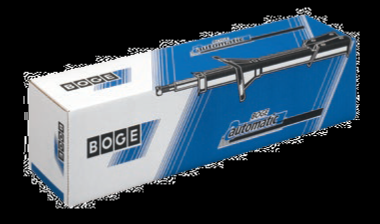Suspension

Optimising Performance for Shock AbsorbersShock absorbers maintain tyre-to road adhesion for good grip and braking. If they, or other suspension components are not working, contact is compromised which can result in longer braking distances and poor handling. This is especially dangerous during critical avoidance manoeuvres. Furthermore, vehicle safety systems like the anti-lock braking system (ABS) and traction control can only function perfectly if all suspension elements are in good working order. When replacing shock absorbers, all other parts of the system should therefore be thoroughly inspected for wear. CHECK EVERYTHING The condition of ball joints and rubber-to-metal components such as control arm bushes and suspension top mounts should be checked before dismantling. Wear to any of these areas can lead to excessive play in the joints, subjecting the shock absorber piston rod to bending stresses that are beyond its design limits.
One possible consequence is that the threaded pin suffers a fatigue fracture where it joins the piston rod. Another problem is side loading of the piston rod rapidly wearing both its chromium plating and its oil seal – causing the shock absorber to leak. INSTALLING AND SECURING SHOCK ABSORBERS A regular suspension test is recommended for every 12,500 miles that the vehicle travels to ensure that they are working properly. However, it is important to keep in mind that there are several symptoms that are indicative that shock absorbers should be replaced: • “Bottoming out” of shock absorber • Rattling noise as a result of worn shock absorbers or absorber mounts • Worn piston rod, seals or valves • Shock absorber action is too soft or firm could be indicative that it is incorrect for the vehicle • Poor road behaviour as the damping action has deteriorated • Unusual tyre wear When replacing shock absorbers it is best to replace them in pairs alongside the ancillary items (spring assisters and gaiters). This is because; the damping variation between new and used shock absorbers will become very apparent during critical times like avoidance manoeuvres. TRANSPORT AND STORAGE TIPS If moved or stored in a horizontal position, air may reach the working area of double-tube shock absorbers. This air can easily be expelled by compressing and extending the shock absorber several times with the piston rod at the top. The shock absorber can also “bleed itself” automatically after being fitted into the vehicle correctly, and driven for a short time. THE BOGE OFFERING BOGE has been a pioneer in shock absorber technology for over 86 years. The OE quality of BOGE shock absorbers enables simple replacement with precision parts and proves the assurance of quality, comfort and durability. |
Related Articles Related Downloads |
